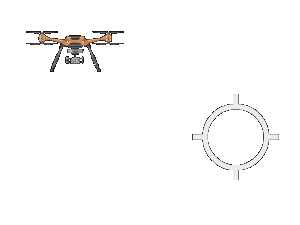Recent drone incidents, especially in the Ukraine-Russia war, have influenced the way armies perceive their air defence. These two principles are key factors in establishing a more versatile approach towards counter-drone systems
The war in Ukraine raised awareness of the substantial usage of drones in combat. It appears that creativeness and innovative methods are rapidly changing this field of war, making it more challenging to deal with.
Right at the beginning of the war, the Ukrainian army asked civilians to contribute their personal drones to the nation’s effort, and drones became easy weapons to get and use. Drones benefit forces from both sides, gathering intelligence and posing a real threat when used to drop ammunition from the air or initiate kamikaze drone missions.
This drone war has changed the way armies around the world perceive their air defence. An army that will not be prepared for an aerial drone’s attack may suffer a severe disadvantage even against a smaller army or terror groups aiming to attack.
Dealing with Unexpected Frequencies
Electronic warfare (EW) is a dynamic field that is constantly developing new technologies that allow for offensive and defensive capabilities. This makes it difficult for any one side to maintain a long-term advantage.
Moreover, EW is often a game of cat and mouse, as each side tries to deceive the other. This can involve using false signals, masking your own signals, and attempting to predict what the other side will do. One of these deceiving methods was excessively used in the Ukraine-Russia war. Both parties often change their drone’s frequencies to unexpected frequencies—eliminating the detection and jamming capabilities of the other side.
This is why counter-drone jammers must be up-to-date with best practices and agile enough to deal with this rapidly emerging threat. SDR technology and modularity are two of the most important principles to ensure counter-drones’ relevancy.
An SDR System Provides Flexibility and Agility
Software-defined radio (SDR) replaced the necessity of relying on hardware changes to modify jamming bands in counter-drone systems. This technology provides flexibility for the forces in the field and enables different configurations or profiles to be implemented through software instead of changing the whole system.
Drone jammers based on SDR technology can modify dynamic radio parameter configuration according to the mission’s needs. Therefore, counter-drone SDR-based systems are crucial when swift changes in target frequency bands are required. The SDR promises an agile adjustment and strategic advantage against the enemy.
Modularity Allows System Scalability and Upgradability
Modular electronic warfare is a relatively new and advanced concept that can provide another critical advantage when dealing with hostile drones during war.
Modular systems are based on separated sub-system modules that can cover different frequency bands. This capability allows defense forces to swap between modules according to operational requirements at the O-level, with almost no downtime to the system. This element can be a game changer when upgrades and changes in the jamming bands are required.
Modularity also allows system scalability. Modular counter-drone systems can be expanded to cope with evolving threat scenarios so that new frequencies can be added to existing systems, making them more capable of handling new threats. Scalable systems avoid the need for complete system overhauls when upgrading capabilities. This translates to faster deployment of enhanced functionalities.
Integrating These Principles Together
The ability to adapt to new threats is crucial for ensuring the effectiveness of counter-drone measures over time. In the Ukraine-Russia case, for example, changing the frequencies on which the drones are operated can be very hard to deal with when your counter-drones’ systems are not SDR-based or modular.
When integrating these principles and technologies, counter-drone systems can become more versatile, flexible, and resilient in the face of rapidly changing drone frequencies.




